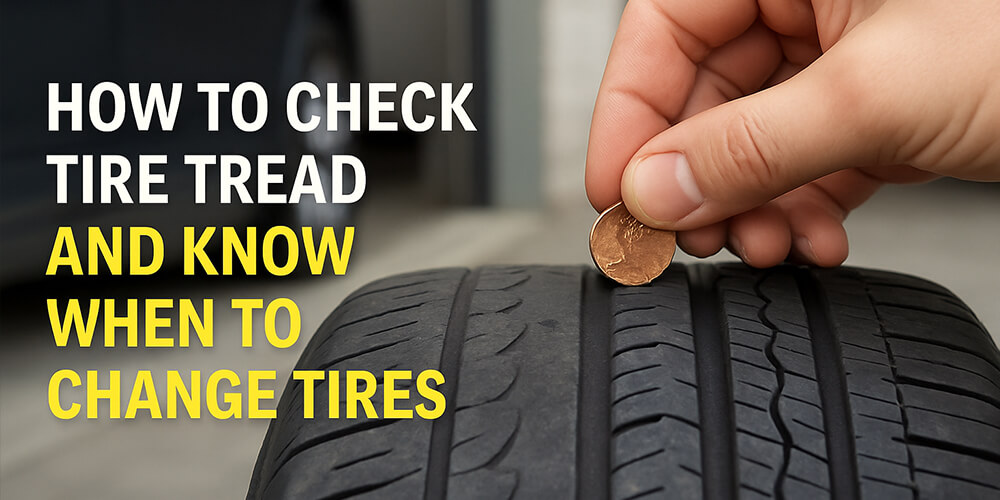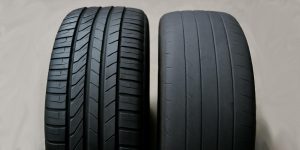
Knowing when to change tires is crucial for safety, particularly during heavy rains, high temperatures, and rough roads here in the Philippines. You should replace your tires when the tread depth drops below 1.6 millimeters. This is the minimum safe level for proper road grip and braking.
Aside from low tread, there are other warning signs:
If any of these are present, the tire should be replaced immediately—even if the tread still looks acceptable.
Several factors help you decide when it’s time to replace your tires. The most important one is tread depth. You can test this using a 1-peso coin. Insert the coin into the groove face down. If the silver rim is visible, your tread is too shallow.
Uneven wear is another issue. If one side is more worn than the other, this could be caused by poor alignment, unbalanced tires, or suspension issues.
Tire age also plays a major role. Over time, the rubber breaks down due to heat and weather, even if the tire hasn’t been used much. Start yearly inspections after 5 years, and always replace tires that are 10 years old or more, regardless of their appearance.
You don’t need special tools to check your tread. The coin method is quick and easy, but if you want to be more accurate, use a tread depth gauge from a local auto shop.
Look for built-in tread wear indicators—these are small raised rubber bars inside the tread grooves. When the tread becomes level with these bars, the tire has reached its wear limit and needs replacement.
Inspect your tires monthly. Always check across different spots, since wear might not be even.

Tire life depends on how and where you drive, but most tires in the Philippines last between 40,000 to 60,000 kilometers. Road quality, weather, and driving habits affect this range.
For example:
As a rule of thumb, have your tires checked every 5,000 kilometers, especially if you drive long distances or carry heavy loads.
Learn How to Change a Tire: Complete Step-by-Step Guide
There is no single schedule for everyone, but a few key guidelines apply:
These practices help you extend the life of your tires and reduce the risk of sudden tire failure.
Whenever possible, replace all four tires at once to maintain balanced handling and braking. This is especially important for front-wheel-drive and all-wheel-drive vehicles.
If you can only replace two tires, always install the new ones on the rear axle. This gives your vehicle better stability during sudden stops or turns. Make sure the replacement tires match the size, type, and speed rating of the old ones.
Learn Tire Size Guide for Drivers in the Philippines
Used tires might seem like a cheaper option, but they come with hidden dangers. You won’t always know how the tire was used or stored. It may have:
Used tires also wear out faster and may not be as reliable during emergencies. For long-term safety, it’s best to invest in new, quality tires that meet your vehicle’s specs.
A trusted local tire shop can help you choose the right tires for your vehicle and driving needs. In the Philippines, road types vary—from city traffic to provincial highways to mountain roads—so it’s important to select tires that match your typical driving conditions.
Before buying, ask about:
You can also talk to us at KGCAR.PH if you want any help in securing the right type of tire for your vehicle.
Here’s a quick summary of essential tire care practices:
By following these habits, you’ll stay safer on the road, improve your vehicle’s handling, and get better fuel economy. Regular checks also help you avoid unexpected tire failures and costly repairs.
Since 2012, KG Car PH has been the go-to for affordable car parts in the Philippines. We make it easy to find the right fit and offer same-day delivery nationwide—so you get quality parts fast, without spending more.
SOCIAL MEDIA
TOP CATEGORIES
QUICK LINKS
© 2025 KGCAR.PH